The Aviation Cocktail had one of the biggest comebacks in the American history of cocktails. After the classic gin cocktail had all but disappeared from the scene for almost 50 years, it made a comeback in the USA.
Luckily, the Aviation cocktail is no longer missing on bar menus across the country. And first mentioned by Hugo Ensslin in 1916 in his cocktail book Recipes for Mixed Drinks, the cocktail also has quite a long history.
The classic Aviation recipe consists of four ingredients: Gin, Maraschino liqueur, lemon juice, and Crème de Violette.
The result is a beautiful, floral, purple-colored Gin cocktail with a sophisticated vibe. Based on the proportions of the ingredients, you can adjust the shade of the drink.
Crème de Violette is a liqueur made of violet flower flavoring and is usually based on Brandy or neutral spirits.
The flavor profile of Crème de Violette is pretty floral with lots of sweetness. Plus, as the name suggests, it is the reason for the beautiful violet color of your cocktail. -The main characteristic that made the Aviation cocktail famous.
There is no specific recipe for a Crème de Violette, which leads to all products having slightly different flavors. Also, the alcohol content can vary. In Europe, though, it's set to a minimum of 15% vol for alcoholic Crèmes.

A Crème de Violette that works great in an Aviation Cocktail is, for instance, the one from Rothman & Winter (22% ABV) made from violet flowers from the Alps.
Other products we can recommend for the Aviation Cocktail are the Crèmes from Giffard (16% ABV) or Monin (16% ABV).
The name and color of the sweet liqueur are derived from the French term Violette, referring to the violet flower. And it is also the forerunner of the Parfait d’Amour liqueur.
Maraschino Liqueur is an Italian Liqueur made of Marasca cherries. That is a type of cherry that grows wildly along the coast of Dalmatia.
The bittersweet, cherry-flavored Maraschino Liqueur also has an almondy note and is an essential ingredient in many cocktails. It is not as sugary as the Creme de Violet and usually has an ABV of 25% to 35%.
The best-known and most-sold Maraschino Liqueur is the one from Luxardo. However, you can also opt for a little more affordable products, for instance, from Lazzaroni.
Since there are so many types of Gins available, you can find many options that don't work too well in an Aviation Cocktail. I recommend using a Gin with a classic, dry flavor profile. Mainly because Crème de Violette is already quite sweet. So you want to balance the sweetness with lemon juice and a Gin that is not too sweet. A typical London Dry Gin should be fine. Alternatively, you could also opt for a Plymouth Gin.
Here's only one thing I have to say, really: make it freshly squeezed lemon juice. Using store-bought citrus juice in cocktails almost always is cutting one corner too many.
You can also consider aging your lemon juice for a few hours to get rid of the bitterness from fresh lemons.
Using Maraschino liqueur in a cocktail often calls for garnishing it with a Maraschino cherry speared on a cocktail pick. And it's no different here.
If you don't want to spend a fortune on real Maraschino cherries, you can make some at home or look for the more affordable Amarena cherries instead.
However, stay away from the bright red, candied cocktail cherries. Those are cheap imitations, unpleasant to eat, and no good fit for your Aviation.
While working as a bartender at NYC's Hotel Wallick, bartending legend Hugo Ensslin mentioned the original Aviation recipe in his cocktail book Recipes for Mixed Drinks, published in 1916. The purple drink soon gathered quite the fanbase and consequently got published in many other cocktail recipe books, as well.
The first big downfall for the Aviation Cocktail came in the 1930s when one of the most influential cocktail books in history, the Savoy Cocktail Book, mentioned it. What sounds like a success at first was a tragedy for the drink. Because, regrettably, the author left out one of the core ingredients of the Aviation, the Crème de Violette.
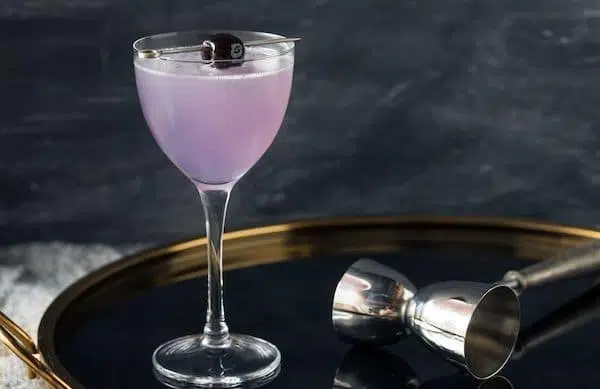
Since the book was so famous, the error spread quickly and was republished hundreds of times without its purple component.
And then, the next big blow came: In the 1960s, Crème de Violette had been discontinued in the US market altogether.
At this stage, it was simply impossible to recreate the classic Aviation recipe according to Ensslin's concept. A disaster and the end for this drink as one of the classic Gin cocktails for the time being.
In 2007 the big comeback started. A Minneapolis-based importer named Haus Alpenz decided to bring Crème de Violette back to the US market.
They imported the version from Rothmann & Winter mentioned above. And as soon as the ingredient came back on the market, cocktail bars across the country began putting the Aviation back on the menu.
In the past decade, with the help of platforms such as Pinterest and Instagram, the Aviation gained traction. Now it is back in its place as a well-known classic again.
As I mentioned earlier, you can change the hue of an Aviation by altering the proportions of the elements of the drink. Our recipe below uses 1/4 oz of Crème de Violette, but if that purple shade is not what you had in mind, you can slightly increase the amount.
But don't overdo it. Otherwise, your cocktail will turn out way too sweet and floral. And you certainly don't want something resembling a potpourri in your cocktail glass.
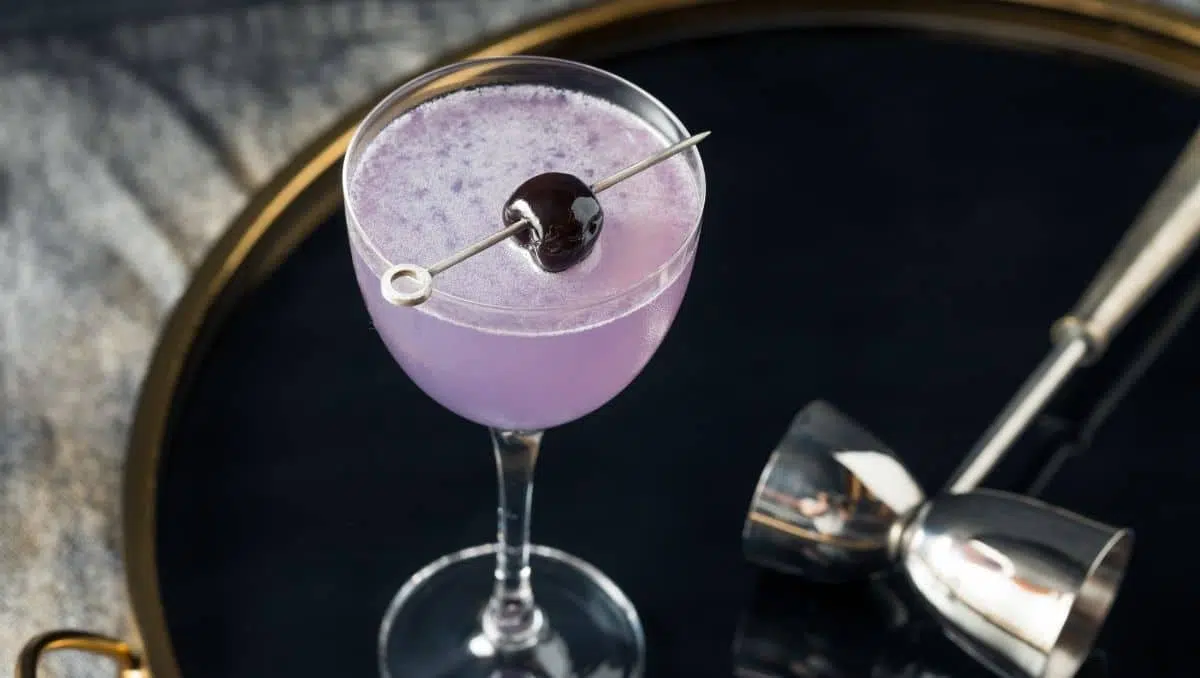
Pox (pronounced Posh) is still flying under the radar outside Mexico. But that should not stop you from trying it and mixing it into delicious Pox cocktails.
At this point, there are only a few known Pox cocktails. With a taste resembling a mix of whiskey and rum, it works nicely as a substitute in existing drink recipes. So, there are plenty of ways to integrate this novelty into your home bar menu.
Here's the list of our favorite cocktails with Pox. Let us know in the comments which ones you tried and how you like them.
That is a beautiful twist on a classic Negroni. Usually, I stick to using equal measures for all Negroni ingredients, but it is different with this recipe. To properly showcase the Pox, I prefer a 3:2:2 ratio.
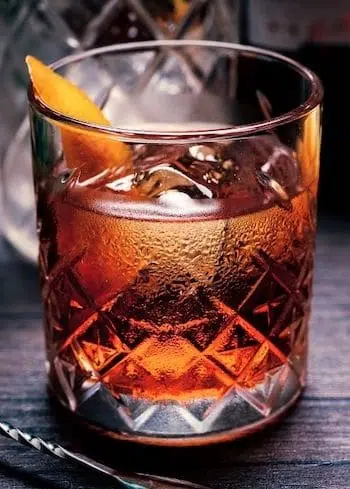
Ingredients
1.5 oz Siglo Cero Pox
1 oz Campari
1 oz Carpano Antica Formula
Preparation
This little twist on a classic Mai-Tai is an excellent example of how Pox can work in Tiki cocktails. It replaces the white rum in the original recipe.
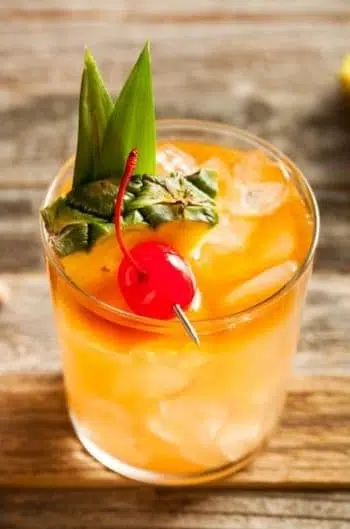
Ingredients
1.5 oz Pox
0.75 oz Orange Curacao
0.75 oz Lime juice
0.5 oz Orgeat
0.5 oz Dark aged rum
Preparation
The Pox Sour is a fantastic Pox cocktail. The corn syrup in the recipe picks up the slightly sweet corn taste of the Pox. Yet, if you don't have corn syrup, you can always use regular simple syrup instead.

Ingredients
1.5 oz Pox
0.75 oz Fresh lemon juice
0.75 oz corn syrup
one egg white
Preparation
This one is an original recipe from Siglo Cero Pox. I found it on their Instagram account, tried it, loved it, and it had to go on this list.

Ingredients
0.75oz Siglo Cero Pox
0.66oz (20ml) Coconut Pulp
1oz Banana smoothie
Fresh Pineapple Juice
Preparation
Here's another recipe from Siglo Cero - an intriguing mix of Pox, whiskey, and Mexican herbs.
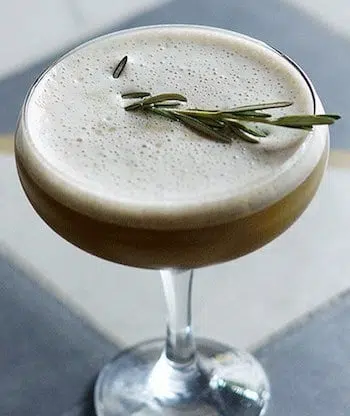
Ingredients.
2 oz Siglo Cero Pox
0.5oz whiskey
2 tbsp Hierba yerba mate
1oz simple syrup
Preparation
I also want to include the famous "Hala Ken" Cocktail from Fifty Mils Bar in Mexico City, but I don't have their recipe and still am working on figuring out the exact measurements.
If you're up to some experimenting, it's made with:
Hoja santa is a Mexican herb that translates to "sacred leaf" and is a common ingredient in Mexican cuisine.
A good, traditional Pox has some smoky notes and a sweet corn flavor. Usually, it's served neat with a side of orange slices lightly dusted with coffee grounds plus some cacao bits.
It really is a unique liquor. Until recently, Pox was exclusively available in the Chiapas region. Thus, the people from Chiapas have by far the best knowledge about ingredients that work well with Pox.
The most popular ingredients to use with Pox among the Chiapas are
Pineapple works perfectly with rum, while citrus is a regular ingredient for many whiskey cocktails. Tamarind, in contrast, is rarely used in cocktails.
If you're new to Pox and don't know what it is, you can read more in this article about the Mayan spirit. Overall, it really is a versatile spirit and works with all sorts of ingredients.
Pox (pronounced: "posh") is a transparent high-proof spirit originating in Chiapas, Mexico that's distilled from a mix of corn, wheat bran, and sugarcane. With these ingredients, the spirit is closer to rum or whiskey than classic Mexican spirits like mezcal and tequila.
The original producers are indigenous Tzotzil Mayans from the Mexican state of Chiapas. For them, the corn-spirit played a key role in religious ceremonies and was one way to visit the underworld.
Right now, only a few regulations control the production of pox. That means many producers don't follow the traditional set of ingredients and replace the rare corn varieties with cheap sugar and wheat.
Let's take a closer look at the Mexican spirit called pox.
Pox is a colorless, high-proof spirit invented by the Tzotzil Mayans in Chiapas, Mexico. It's also known as agua ardiente, which translates to "fire water" or "burning water."
Pox is typically made with corn, wheat bran, and sugarcane, but due to little restrictions, some producers mainly use inexpensive sugarcane and wheat for production.
This lack of regulations also leads to a broad spectrum of ABV that ranges from 19% up to 60%. Pox available in the US must contain at least 40% to be referred to as spirit. That's why the few brands selling it in the US all contain at least 40%, some even between 50% to 60%.
As an integral part of the Mayan culture, the spirit plays a significant role in religious ceremonies. Even today, the Mexican spirit is part of many religious rituals across the Chiapas region.
For a long time, it was only available in the Chiapas region as it was prohibited to sell the spirit outside its native territory. However, that changed nine years ago, and pox is now gaining traction in bars across Mexico and the US.
Traditionally pox is made from a mix of rare local corn varieties, wheat bran, and piloncillo - a sweetener made of sugar cane. In this traditional mix, corn is the most significant ingredient; -wheat and sugar cane are added only in small amounts. However, in the absence of clear regulations, some producers take advantage of this and make pox without (or significantly less of) the most expensive ingredient - corn.
On the other hand, these loose regulations also offer opportunities. They make it a versatile spirit that can be distilled with an assortment of flavoring ingredients such as hibiscus, cacao, and fruits.
Pox is produced by distilling a mix of corn, wheat, and sugar cane in a two (single-distilled) or three-step process (double-distilled) using a copper still:
To produce lower ABV pox-based liqueurs, single or double-distilled pox is infused and macerated with herbs, fruits, and plants. After that, the flavored spirits are sweetened and reduced in alcohol content.
According to Julio de la Cruz, the founder of the Posheria in San Cristóbal de las Casas Chiapas, most of the production is hand-made and timed by the lunar calendar. The process starts with a new moon because this phase stands for a "new beginning."
The flavors can vary depending on the ingredients. The taste of traditionally produced pox, has sweet corn notes, subtle smoky flavors, and an almost rum-like aftertaste. The more corn is used, the stronger the smoky notes in the spirit.
The aroma has similarities with fresh corn tortillas, a subtle sweet note, and more corn. Depending on any additional flavoring, the aroma profile may be more complex. Common flavorings are cocoa, hibiscus, rosemary, tamarind, and local fruits like mango.
The taste is best compared to unaged sugarcane or grain spirits like white rum or unaged American whiskey.
The best way to discover all the nuances is to drink pox neat. As with mezcal, you can serve the spirit with orange slices, cinnamon, and coffee or cocoa beans.
Due to its complex taste, pox is also great when paired with other ingredients in mixed drinks. For example, its resemblance to white rum makes it an excellent replacement for rum in twists on classic Tiki cocktails like the Mai-Tai.
There are plenty of ways to use pox in cocktails besides replacing rum in popular Tiki cocktails. Its distinct, unique flavor profile is a perfect option for twists.
Yet, the corn-spirit not only works as a substitute for other spirits but also is excellent in split-base drinks. Pair it with whiskey, rum, or rhum for more complex flavor profiles in your drinks.
As this is a more extensive topic, we have a separate article about cocktails made with pox.
Unlike mezcal and tequila, there's no agave involved in making pox. This main difference between the spirits leads to further distinctions. The taste of pox is sweeter and more similar to rum than to mezcal or tequila. Also, the spirit is exclusively produced in Chiapas, whereas the majority of tequila comes from Jalisco, and most mezcal production takes place in Oaxaca.
Here's an overview of how pox differs from tequila and mezcal.
| Pox | Tequila | Mezcal | |
|---|---|---|---|
| ABV | 19% to 60 | 35% - 55% | 35% to 55% |
| Proof | 38 to 120 | 70 - 110 | 70 - 110 |
| Taste | Sweet corn and subtle smoky notes | Cooked agave, spicy, earthy | Smoky, earthy |
| Produced in | Chiapas | Mainly Jalisco | Mainly Oaxaca |
| Base ingredients | Corn, wheat, sugar cane | Agave | Agave |
As a traditional Mayan spirit, it is used in religious ceremonies. In the Tzotzil Mayans language, pox is the equivalent of "medicine" or "healing."
Indigenous communities used it to cure physical and spiritual problems. The high amount of alcohol combined with the burn was associated with healing from stomach pains and being free from evil spirits.
The Mayas believed that the burning sensation after drinking the spirit was caused by evil spirits leaving your body. And the comforting warmth following the burn then would fill the void the evil spirits left behind.
It's also believed that Mayan priests and warriors used pox to try and visit the underworld.
Pox is the latest member of Mexican spirits aiming to conquer the American Market. For a long time, tequila was the only popular spirit coming from Mexico; -At least on a global level. But with the rise of mezcal, which suddenly went viral, more and more people are getting interested in other Mexican spirits.
That also helped Sotol to establish a place in the world of liquors. And it certainly doesn't hurt pox, either. Additionally, the timing to legally allow selling it outside of the native region was perfect: 2012 was a brilliant time to benefit from the success of mezcal.
Because the Mayan spirit has been kept a secret for such a long time, many bartenders have become curious and begun experimenting with it. Today, you can find it in many bars across Mexico and some North American bars.
Pox is an intriguing and unique spirit with an ancient history. The Mayan aguardiente still plays a significant part in Tzotzil Mayan culture, but it is also one of the new and upcoming Mexican spirits.
If you want to try it yourself, a bottle of Siglo Cero would be a good choice. -It's one of the very few brands that are easily accessible at the moment.
Hamburg is arguably one of the most beautiful cities in Germany. The home of the largest seaport in the country is famous for its nightlife and also is home to some truly fantastic cocktail bars.
In living quality rankings, Hamburg is always among the top five. -Not only, but also because of its nightlife. The bustling Reeperbahn strip is the most famous area for diving into Hamburg's party scene. It is crammed with pubs and bars that offer cheap drinks. But there is more to Hamburg's nightlife - if you know where to look.
Hamburg has a fine selection of high-quality cocktail bars. From classy hotel bars to fancy speakeasy places, Hamburg has them all.
Each has the distinct Hamburgean vibe you can feel all over the city. A bit edgy, a bit different, and yet surprisingly welcoming. So join me for my ultimate list of the best cocktail bars in Hamburg.
Jump to Clockers | Le Lion | Drip Bar | DaCaio | Botanic District | Bohemian | Atlantic Lobby Bar | Boilerman | Drilling

Hidden behind an ordinary doorway in Paul-Roosen-Straße is the home of Clockers. You won't find a sign or hint that there's a bar inside, so check the address first and then confidently enter that door.
Once you get inside, it feels like being transported into another world. You don't know where to look first. There is a beautiful antique bar, grass and moss on the wall, wooden decorations, and lights all over the place.
When it comes to their drinks, I advise trying the Clockers Gin & Tonic first. It's not a fancy take on the highball, but Clockers produces fantastic Gin in their distillery (read about Drilling below). If you're indecisive, chat with the bartender and get a recommendation.
The jungle-like basement is only one part of the place. When climbing the stairs to the first floor, there's a small room with inviting leather chesterfield sofas, a bookshelf, and a small bar counter.
That usually is reserved for private events, but if you are lucky, you might be able to have a look at it and even enjoy a drink up there.

Le Lion might well be the most famous cocktail bar in Hamburg. It also is one of Germany's early birds in the speakeasy and craft cocktail scene and home to a modern classic cocktail - the Gin Basil Smash.
Getting a seat at this place can be difficult, so call beforehand and make a reservation. Once there, you have to ring the bell at the large black door to get inside.
The interior of Le Lion is a glamorous mix of textured wallpaper and dark wooden furniture. The elegant setting is made complete by chillout background music. It is loud enough to support the atmosphere but does not distract from your conversation or the bartender's work.
If you're unsure what to order, I recommend trying their Basil Smash (easy recommendation) or a Martini. Le Lion serves some exquisite Martinis. They also come with a side dish-like serving of olives.
Location of Le Lion - Bar de Paris
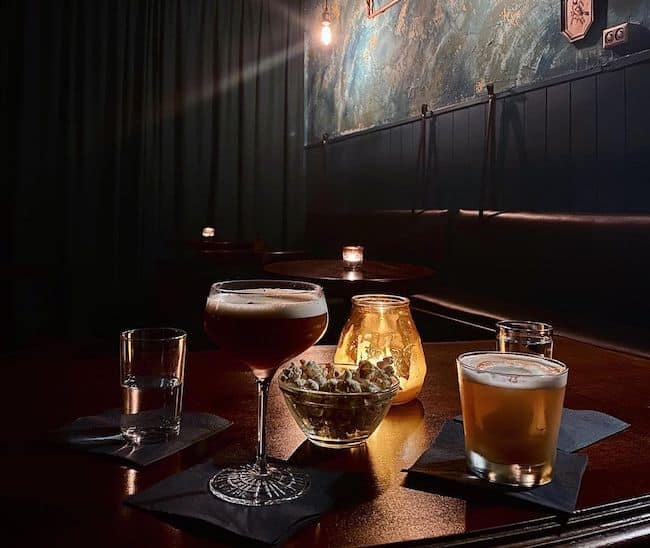
Drip is a small and hidden gem recommended by one of our readers. Well, thanks for that because this place is amazing.
Drip Bar is a small, cozy place with a dim ambiance, well-trained staff, and fancy drinks. If you love fancy cocktails with a twist, this is your place.
To get inside, you need to ring the doorbell. The service staff will check if there's enough space and let you in if that is the case. Have a Plan B ready, as this place is popular and often packed.
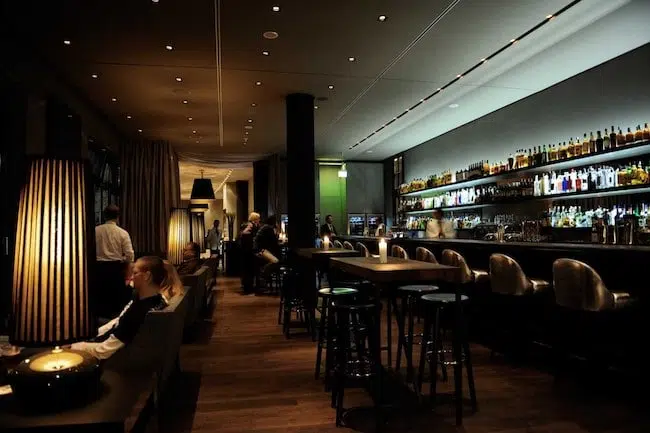
DaCaio is a hotel bar. To be precise, it's the bar of The George Hotel right at the Alster river. It's a fancy, British-themed establishment that starts service at Afternoon Teatime.
Don't get deterred by the fact that it is inside a hotel. Their menu is pretty amazing. Besides some classic cocktails and a special section for Campari cocktails and Spritzes, they offer some truly exciting drinks.
Their cocktails are a bit pricey, though. Yet, if you're looking for outstanding cocktails with the highest-quality ingredients, that place is worth the money.
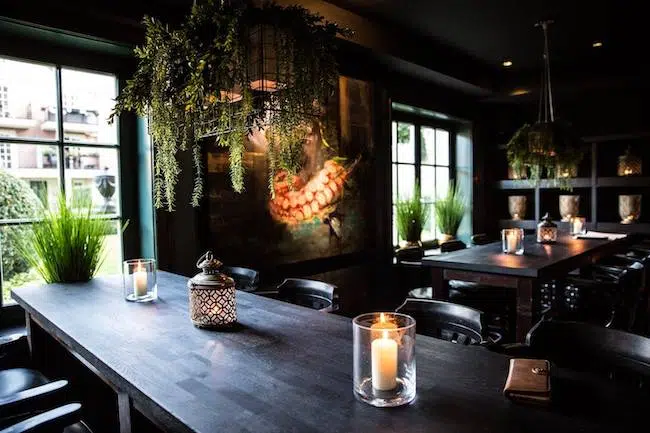
Next on the list of places for a fancy drink is Botanic District. I especially like the many plants and dark interior design. It brings a bit of boudoir charm to this place, making it stand out.
Besides offering outstanding cocktails, they also have some delightful food options on their menu. So if you're looking for a great cocktail and something to eat, Botanic District is one of the best options in the city.
It's pretty rare to get excellent food and sensational cocktails at the same place. More often than not, one of them is somewhat disappointing. But Botanic District is different.
If you're looking for a drink recommendation, try the Violet Fizz.

When in Hamburg and looking to get some drinks at a place with fancy interior design, Bohemian is a fantastic choice. This place is not as popular as it should be, but that only improves your chances of securing a table.
The Bohemian is truly a unique bar with a passion for mixed drinks serving some of the best cocktails in Hamburg. The menu features a series of signature drinks illustrated next to a list of ingredients.
When ordering the "Michelangelo" you'll get a drink made of Gin, white port, Cointreau, and Verjuis. In addition, you get a paint palette with three different flavoring options. You can add them yourself with the help of a brush and thus vary the flavor of the drink.

Another hotel bar on this list is the Atlantic Lobby Bar. Hotel Atlantic welcomes its guests for over a century already. And just by looking at the gorgeous lobby, you can feel a vibe of class and elegance dominating this place.
It is not a venue to party and boisterously celebrate but rather one for indulging in well-crafted cocktails. The seating options are mostly old leather chairs. They have chandeliers hanging from the extra-high ceiling and white wooden decor on the walls.
To further elevate the drinking experience, a pianist plays live while you enjoy your drink. And speaking about drinks, try the Admiral Schley when you're there. It's their own creation based on a mix of Bourbon and Cachaça.
Location of the Hotel Atlantic Lobby Bar

The Boilerman Bar at Hafenamt has a unique approach to its drinks menu. While many other bars try to find the fanciest ways to present cocktails, Boilerman does the opposite and opts for elegant understatement.
The drinks you get there are fantastic and of the finest quality. But the stars on the menu of Boilerman are Highballs.
A Highball consists of only a spirit and filler. With this limited list of ingredients, you have to be extra careful to balance the flavors. And Boilerman is one of the best places for that.
Most Highballs are based on Rum, but you can also get some based on Gin, Tequila, or Whiskey. If you want to read more about Highballs, check out this article about Highballs vs. Cocktails.
When you look up the place on online maps, you find more than one location. They are all good, but I highly recommend visiting the one at Hafenamt.
Location of Boilerman Bar Hafenamt

That is an exciting one for me: It's owned by the guys from Clockers, and it is much more than just a bar. The Drilling opened in 2018 and is worth a visit for multiple reasons.
"Drilling" is the German word for "three-pronged fishhook", that's also shown in their logo. And as the name suggests, the place consists of three different parts.
The first part of Drilling is a cafe that offers high-quality coffee made of seasonal coffee beans and serves a small selection of delicious pastries, cakes, and sandwiches.
The second part is the distillery that also produces Clockers Gin. It's the first distillery in the city of Hamburg since 1980.
And the last part is obviously the bar. The interior design is clean and industrial, yet cozy still. Knowledge and experience of the Clockers have been brought into this little gem, making it a very thought-out location.
Hamburg is an excellent city for having fancy drinks or cocktails. With our guide to craft cocktail places in Hamburg, you'll never feel lost when searching for your next drink. And there are even more great places like the chug club, Boothaus, numerous sky bars, and a beach bar.
If you are new to bartending and mixology, you will soon learn that most cocktail recipes ask for some kind of syrup. In the vast majority of recipes, this will be simple syrup, making it one of the most used ingredients in cocktails.
Instead of heading to the store and buying a bottle, you can save some $$ and make it at home. After all, this syrup is just sugar dissolved in water.
Apart from cocktails, this simple syrup is also great to sweeten other beverages like coffee, lemonade, or tea.

Regular simple syrup is best made with caster sugar. It's readily available in every supermarket, and it is also affordable. The fine, white crystals dissolve nicely in warm water, and your syrup will have a neutral taste - something you want for many traditional cocktail recipes.
Alternatively, you can use regular white, granulated sugar. It's even easier to get and will cost you less. Avoid powdered sugar, though. It is too fine and, in the US, often contains a so-called anti-caking agent. This additive, e.g., cornstarch, makes up about 5% of the sugar, and we don't want that in our cocktails.
The ideal ratio in the standard recipe for simple syrup uses one part sugar to one part water (1:1). Whenever you read simple syrup in a cocktail recipe, it refers to this ratio. This recipe is also the base for most flavored and colored variations.
However, there's also another common type of sugar syrup for cocktails, usually referred to as rich simple syrup.
The recipe for rich simple syrup requires two parts sugar per one part water (2:1). It is the most common variation of the base formula and has a thicker consistency and a sweeter taste.
It is often used to get a richer texture in drinks, and it creates a better mouthfeel. The process is the same as for regular syrup. It only takes a little longer until all sugar is dissolved in the water.
Making simple syrup is very straightforward. The most elaborate part about making your own simple syrup is measuring the ingredients and bottling the final syrup.
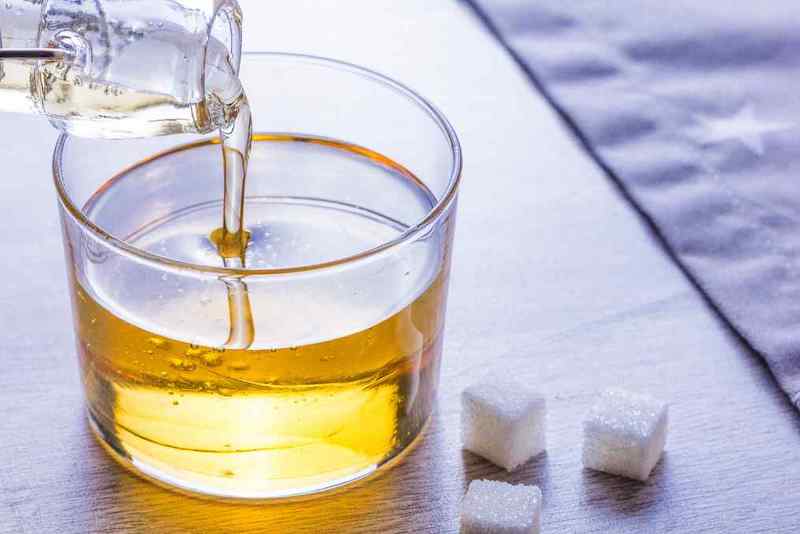
A common way to create variations of simple syrup is to substitute the type of sugar you're using as a base. Try out honey or brown sugar, or go sugar-free with stevia. Further, you can experiment with special subtypes like cane, coconut, or Demerara sugar.
Additionally, you can easily aromatize your homemade simple syrup can easily with all sorts of ingredients. The sky is the limit, quite literally. Get creative and try making floral, fruity, spicy, or herbal syrups. We also have some inspiration for you.
You can make flavored syrups of all sorts. Classics like Orgeat and Falernum (this can be alcoholic, too) are a staple in every cocktail bar. But there is plenty of options and room to get creative.
Here are some ideas for your next flavor syrups:
The list of cocktails that call for simple syrup in their recipes is sheer endless. Here are some of the best-known:
and many more.
When properly sealed and refrigerated, it lasts 2-3 weeks. By adding a shot of Vodka, you can extend shelf life to 4-5 weeks.
Yes, you can freeze a standard 1:1 simple syrup. But if you do and want to use it, plan in enough time for it to liquefy again.
Yes, you can use this syrup for desserts, to sweeten coffee, tea, and even lemonade.
Simple syrup is a liquid sweetener made by dissolving sugar in water. It brings sweetness to cocktails and balances the tart and acidic flavors of fresh lime or lemon juice.
Bartenders use all kinds of syrups. The most common ones are simple syrup (1:1 ratio) and rich syrup (2:1 ratio).
The elements of the traditional Gin Gimlet recipe were gin and lime cordial, nothing else. But as the art of making cocktails evolved, fresh ingredients were preferred over store-bought cordials.
In the case of the Gin Gimlet recipe, that meant replacing lime cordial with freshly squeezed lime juice paired with simple syrup.
But that's not where modern mixology stops. These days, there are many Gimlet variations, and we will introduce some of the most important ones.
Quick Facts Gin Gimlet

Gin, limes, and simple syrup are enough to mix up a Gin Gimlet in a modern way. If you're a fan of boozy cocktails, our recipe of 2 oz gin, 0.5 oz freshly squeezed lime juice, and 0.5 oz simple syrup is for you.
This recipe is well-balanced but definitely on the more potent side. If it's too strong for you, increase the amount of lime juice and simple syrup to 1 oz each.
Either way, shake up your cocktail in a cocktail shaker with plenty of ice for about 10 seconds. You want your drink properly chilled to get it perfect.
For lime juice, you should make sure it's freshly squeezed. Yet, there are different possibilities. You could, for instance, consider aging it for a few hours to take off the edge. If you want to read more about this, head to the article about lime juice and its use in cocktails.
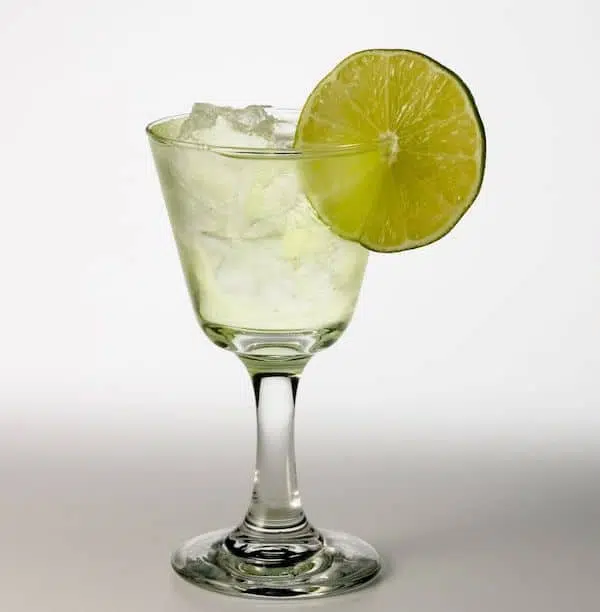
Initially, the Gin Gimlet Cocktail was made with Gin and Rose's lime cordial. The problem with this traditional recipe is that it's way too sweet for the average palate today.
Inventor Harry MacElhone asks in his recipe for a mix of one part gin to one part lime cordial. After stirring with or without ice - depending on personal preference-, his drink was ready to be served. That would turn out very sugary, as you can imagine.
If you want to use the original ingredients but make the drink less sweet, we suggest tweaking the classic Gimlet recipe a bit.
You can keep the ingredients classic, but change proportions and shake it with plenty of ice to properly chill it. A mix of 2 parts gin to 1 part lime juice will get you a far better drink.
Nevertheless, in modern mixology, lime cordial is extremely rare for a reason. Even with Rose's lime cordial -the original base for the cocktail and widely available in the UK- it doesn't produce the desired tangy and acidic lime taste.
You will only get that with freshly squeezed limes. And this perception literally screams for a modern take on the original recipe.
The traditional is Plymouth Gin, and that really works excellently. If you're looking for a more affordable version, go with a standard London Dry option like Beefeater Gin.
If you want to experiment, you can use all kinds of gin, really. The simple recipe of the Gin Gimlet gives a lot of room for all sorts of flavor profiles you can find in the various types of gin.
As already mentioned, there are many variations of the classic Gin Gimlet, ranging from vodka to cucumber or cucumber and basil.
What all of these cocktails have in common is that they're pretty easy to make. So let's have a look at these Gimlet variations.

If you're a fan of vodka -or simply not a big fan of gin- try to make a Gimlet with the popular grain spirit.
Everything you have to do is replace gin with vodka, and you're ready to go. No change in proportions, no additional ingredients. It's as easy as that.

This one is another beautiful variation. Before adding the traditional Gimlet ingredients to your cocktail shaker, muddle a few slices of cucumber in it.
You can add a bit of lime juice to make the muddling a bit easier. Garnished with a slice of cucumber, this Gimlet variation adds a nice and fresh touch to the traditional version.
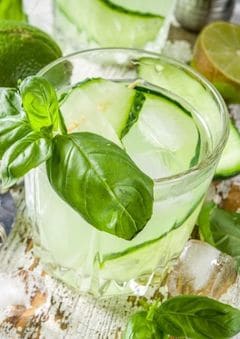
The Cucumber & Basil Gimlet is tweaking the original recipe a bit more.
Mix 1.5 oz of vodka with 0.25 oz lime juice and 1 oz lemonade. Before shaking, muddle two basil leaves together with 2-3 cucumber slices.
Shake the mix with plenty of ice and pour into a chilled glass with ice. Garnish with a basil leaf and a slice of cucumber to complete this Gimlet variant.
The actual recipe was first mentioned in writing by Harry MacElhone, a mixology legend. He introduced the Gin Gimlet recipe in his book Harry's ABC of Mixing Cocktails in 1930. It reached its peak of popularity in the 1980s. But the simple Gin cocktail was invented long before that.
The first appearance dates back to the 1860s. As with various other cocktails, the British Royal Navy was loosely involved in the birth of the recipe.
Rear-Admiral Sir Thomas Desmond Gimlette, who served the British Navy from 1879 – 1913, is cited by some as the namesake of the Gimlet.
For medical purposes, he is said to have ordered to mix spirits with lime juice to make the juice last longer while on the sea. The intent was to prevent scurvy - a disease caused by a lack of vitamin C.
Another possible story about the origin of the Gimlet's name is that the drink was called after a hand tool used to bore into barrels of spirits on Navy ships – a gimlet.
But back to the actual cocktail recipe: In 1867 Mr. Lauchlan Rose, a Scotsman, invented a method to keep lime juice longer: By mixing lime juice with sugar, Rose created the very first lime cordial. -A key ingredient of every classic Gin Gimlet cocktail. This clever product eventually made its way to the British Navy.
As you can imagine, sailors weren't too keen on drinking pure sweetened lime juice. Thus, they continued to mix it with spirits, mostly with gin, unaware that this would become a classic cocktail recipe.
We all know numerous types of alcoholic beverages. Beer, wine, and spirits are considered the main categories. And to make them, different techniques and steps are required like brewing, mashing, fermentation, distillation, or filtration. In the following, I will explain these procedures and how they differ for the different types of spirits.
Malting is an essential step in the process of making malt Whiskey. The base product for this step is barley. It is exposed to a warm and damp environment to let it germinate. The mixture of water and barley is then allowed to rest for about two or three days.
During those days, the barley grains use the solar energy they collected while growing to transform the contained starch into sugar. After this, or when the barley buds reach about an inch of length, the process is interrupted. The resulting malt is dried and ground before starting with the next step.
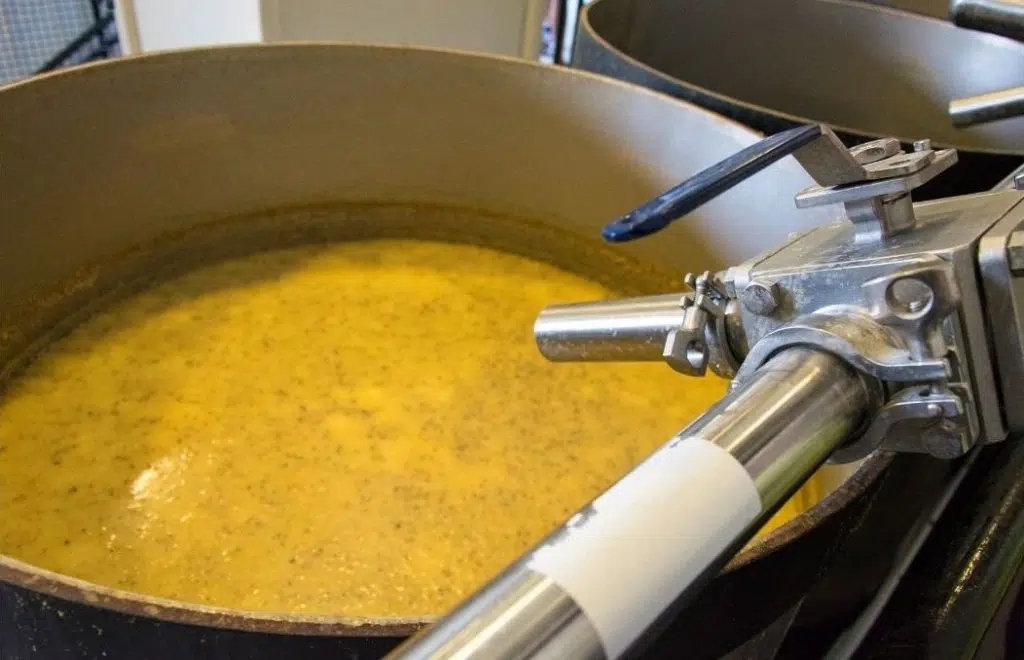
You can divide the raw materials used for making spirits into two categories: Category one contains lots of natural sugars, and category two is rich in carbohydrates (starch) which easily can be transformed into sugars with the help of enzymes.
Grapes are probably the most used raw fruit element for spirits. For instance, they're the base product to produce brandy. Other ingredients that fall into this category are sugarcane, sugar beets, and agave. The most significant vegetable base for crafting spirits is sugarcane. It's the base ingredient for all kinds of rum.
On the other hand are the starchy raw ingredients of which corn is the most used cereal grain. But also rye, barley, rice, and wheat are used to create alcoholic beverages. Another commonly used component is potatoes. Although only used in central Europe, there are plenty of spirits made of potatoes.
The first step here is to mill and press the raw ingredients. That serves as preparation for the actual mashing process. The sugar and starch in the unprocessed ingredients are more accessible, which makes it easier for enzymes to transform into fermentable sugars. And that is the ultimate goal of mashing because it prepares the ingredients for the fermentation process.
The actual mashing is performed in large mashing vessels. Those vessels constantly mix their content while simultaneously heating it up. The raw ingredients are mixed with water and heated under pressure to break up starch cells. Sometimes this means bringing the mix to a boil, and sometimes the temperature needs to get increased to an even higher level.
Once the starch cells are broken, the temperature is decreased, and malt meal is added. This step is crucial to get those fermentable sugars needed for the fermentation process.
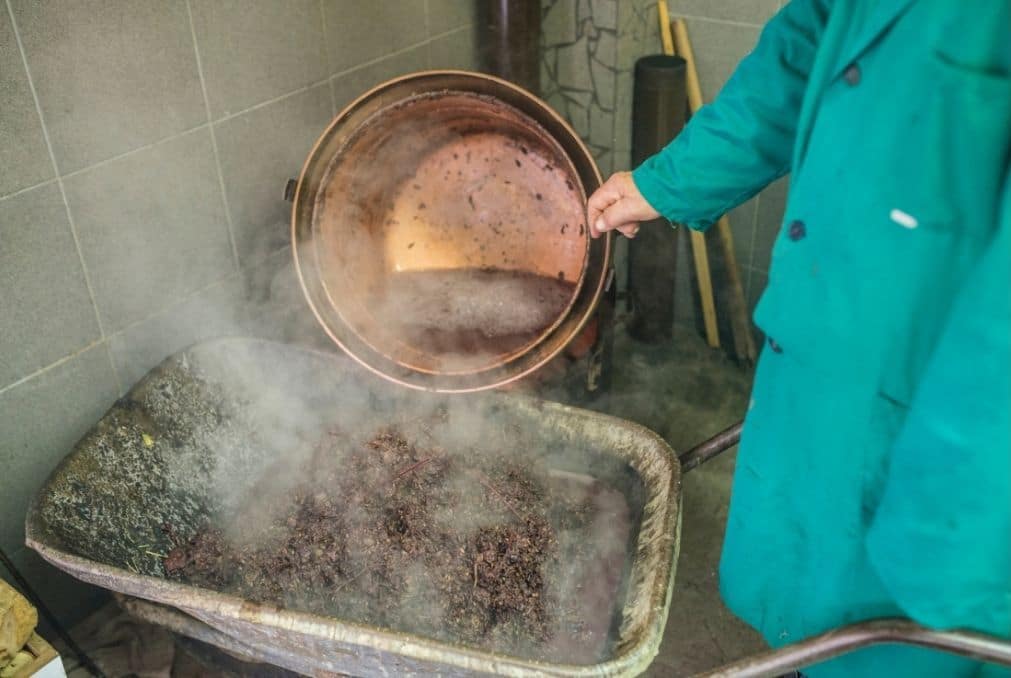
During the fermentation process, simple sugars transform into ethyl alcohol. That is achieved by adding yeast to the mixture. Depending on the type of alcohol you want to produce, different strains of yeast are necessary. For example, you need another kind of yeast strains to make wine than for making rum.
For the yeast to be most effective, it has to be in a slightly acidic environment. If the mix is not acidic enough, the level is increased by adding small amounts of acid. The same applies to the sugar level - until the balance of sugar and yeast is in perfect balance.
When done correctly, the resulting product should contain between 7% and 9% of alcohol. That usually is the case after 48 to 96 hours of fermentation at the optimal temperature. The range of temperature applied usually is between 75°F and 85°F - or if 24°C to 29°C. Also, the duration of the fermentation can vary, and one needs to keep a close eye on its progress. If it continues too long, bacterial action can affect the taste and quality of the final product.
In this step, the alcohol levels get increased by separating alcohol and water. A usual setup consists of three integral parts: The still, the condenser, and the receiver. The first is responsible for heating the mix, the second cools it down, and the last one will collect the distillate. But as you might know, there are different kinds of stills: Pot stills and column stills, also known as continuous stills.
The pot still is a traditional device for making spirits. It's mainly recognized for the production of Whiskey in Scotland and Ireland. But it also is used for making aged spirits like Rum and Tequila. And some Brandys are or were made with pot stills, too. But this type of still is about to go extinct. More and more distilleries switch to more modern column stills.
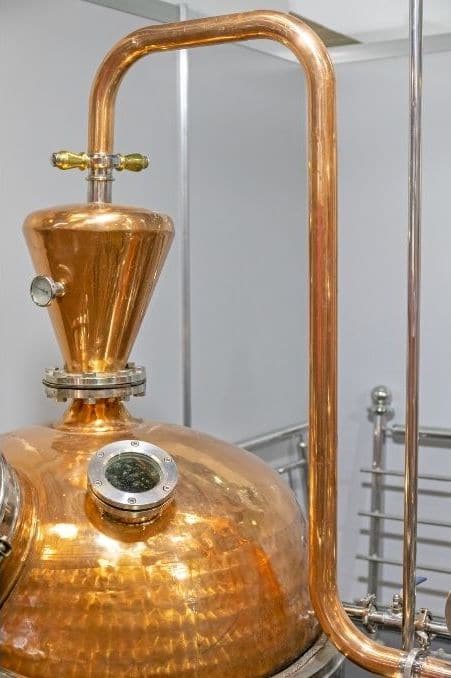
These days, it often is used for making flavored Whiskey, as the distillates contain deeper flavor profiles than products from a column still. Either way, let's see how a pot still works.
The main elements are the boiler or kettle, the swan-shaped neck, and the spiral-shaped copper tube, also called the worm. All that is connected to the condenser, which turns the vapor into liquid. As the kettle is heated, alcohol changes its state from liquid to vapor and rises, floating through the swan neck and finally ending up in the worm. Once it reaches the condenser, it will change back to liquid form.
But there are also unwanted particles coming along the ride due to whom the result gets divided into three cuts called the head, the body, and the tail. The head and tail are the first and last parts of the distillation process. Hence, they carry too many unwanted compounds and get discarded. Only the body is used in the final product. But don't worry, head and tail each only makes up for 10% of the total distillate. So this still leaves us with 80% of usable product.
A one-time pot-distilled product will have around 25-40% ABV. So most of the time, a second distillation round is necessary to increase the level of alcohol.
So we established that the pot still is ideal for preserving flavor from the ingredients while gradually increasing the ABV of the final product. However, it's not the most effective way to distill a spirit. And efficiency is the biggest plus of the column still. It was invented during the early 1800s and is a little bit more complex than the pot still.

The device usually consists of two columns. One is called the analyzer column, the other the rectifier column. The analyzer column contains many perforated metal plates and gets heated from the bottom while the fermented mash is poured from above. When the hot steam hits the mash, the alcohol evaporates and rises to the top. When moving through the perforated plates, heavier particles condense, and only alcohol goes through.
This way, the column still creates highly concentrated distillates in just one run. It can achieve as much as 96% ABV in just one distillation step. That is a vodka of 192 proof. Column stills are usually used for making unaged spirits like Vodka, Gin, and White Rum.
Not all types of spirits require a filtration step. But Vodka, for example, certainly does. It's usually distilled multiple times before being filtered to get its smooth and pure character. The most common type of filtration is charcoal or carbon. And often, the spirit is not only filtered once but multiple times. To remove almost all bits of flavor and odors, some brands filter their Vodka up to 10 times.

Also, not all spirits are aged. Aged spirits are usually either Rum, Tequila whiskey. Vodka, most Gins, some Rums, and some Brandies typically are unaged spirits. However, on rare occasions, there are also aged versions of Gin or Brandy. To age a spirit, it usually is filled into oak barrels to mature and develop flavor.
During the time of aging, the spirit will interact with the wooden vessel. Extracting flavors of the wood, react with it, and developing its distinct taste. This process has to be closely monitored and balanced to get the desired results. Depending on the spirit and the aspired flavor profile, aging can take anywhere from a couple of months to 40 years and longer.
Average aging periods for Rum or Brandy are between 2 and 5 years. For Whiskey, it's a few years longer. Each stage of aging has its distinct flavor profile. There are also notes on how a specific aged spirit should taste after a certain amount of time.
An alternative to aging the whole barrel to get the tasting notes you want is blending. A blended spirit consists of different spirits mixed together to get the blended one.
For example, you could want a blend of a 7-year-old Rum. That is achievable by blending 10-year-old Rum, 5-year-old Rum, and maybe even 3-year-old Rum until you have the exact flavor profile desire. That was just theory and a little more complex in real life. But the principle of blending works exactly like this. That's also the reason why blended products tend to be a bit cheaper than non-blended.
It is not only due to James Bond that the Martini reached such tremendous popularity, but the movies sure played a role in making this drink so successful.
The classic Martini solely consists of two elements: Gin and Vermouth. As with many other classic cocktails, there are many riffs on this traditional recipe.
And because it is hard to keep track of all the different types of Martinis, I put together an overview of the most important ones.
There are plenty of different types of Martinis. But they all belong to one of the following categories. They either can be categorized as original Dry or the sweeter Vodka Martinis.
Dry Martinis are more spirit forward. They consist only of alcoholic ingredients like Gin and Vermouth, while Vodka Martinis are usually mixed with various fruity components.
The latter actually is pretty far from a classic Martini. Honestly, the principal thing they have in common is the Martini glass.
One of the main questions regarding the Martini is how to prepare it. Hard to believe, but the answer is pretty straightforward:
A classic Martini made of Gin/Vodka and Vermouth should be stirred in a mixing glass with ice. If creating a Martini with non-alcoholic ingredients like juices or espresso, shaking is the way to go.
Either way, serve the drink in a chilled Martini glass. For this, you can put your glass in your freezer or put some ice cubes in it while you prepare the cocktail.
Traditionally a Martini is garnished with a single olive or with three of them. Be warned, it must be an odd number, and Martini drinkers can be picky about this.
But with all those different types of Martinis, there are also more types of garnishes. The most common garnishing elements are:
And as I said, Martini drinkers can be particular about this. Your best bet is to ask how they want to have their Martini.
That does not only apply to garnish but also to the measurements of the drink. Martini aficionados often have a clear understanding of how their perfect Martini has to be.
But now, let's get to our compilation of the different types of Martinis.
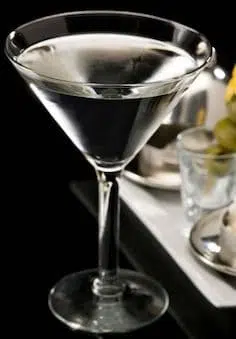
The godfather of all Martinis.
A classic Martini consists only of Gin and Vermouth. And these two elements make for a delicious, aromatic cocktail while keeping it simple.
Some people prefer replacing Gin with Vodka, but the real deal definitely is made with Gin. But all you Vodka lovers, don't worry, it's next on the list.
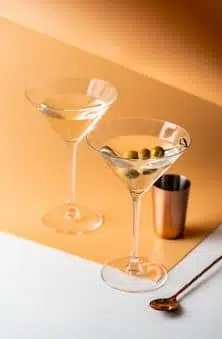
Here it is, the Vodka Martini, a less aromatic version of a Martini due to the neutrality of Vodka.
As with every cocktail that has only a few ingredients, you want to make sure you use high-quality. Especially with the Vodka, make sure to use a decent one.
Absolut Vodka is a good choice. Grey Goose and Belvedere are even better.
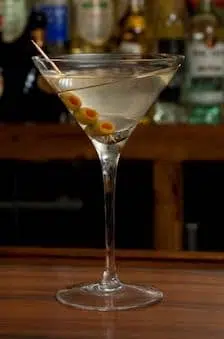
The Dirty Martini is probably the most popular riff. It sticks with the original ingredients of Gin and Vermouth and then adds olive brine.
Yep, the brine of jarred olives goes into this drink. And it works great and creates a more savory version of this cocktail classic. Garnish it with olives speared on a cocktail pick.

The Dill Pickle Martini is quite similar to the Dirty Martini regarding the ingredients.
It's also based on Gin and Vermouth but replaces the olive brine with dill pickle brine.
Another recipe that may sound weird at first but turns out to be beautiful. I totally recommend trying this Dill Pickel Martini.
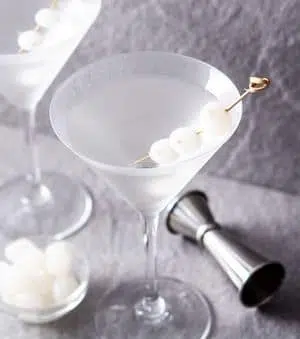
The Gibson is a version with only minor changes. In fact, the only difference is the garnish:
Instead of a Spanish olive, a Gibson Martini stars a pickled onion. So, it is a close relative to the classic Martini but sports an unusual garnish.
And again: Always garnish with odd numbers. So use one or three onions for your Gibson, never two.

The Vesper, or also Vesper Martini, is a fictional cocktail. The recipe goes back to 1953 and the very first James Bond book written by Ian Fleming.
Now, almost 70 years later, the Vesper is a cocktail classic. Agent 007 really did a great job making Martinis famous.
The recipe for this cocktail is potent. Three ounces of Gin, 1 ounce of Vodka, and 0.5 oz of Kina Lillet get mixed to create this boozy drink.
Typically garnished with a string of lemon peel, this cocktail looks very classy.

This twist on the Vodka Martini, the Sherrytini, replaces the Vermouth with fino Sherry. That brings back some aromatic notes that are missing in the classic Vodka Martini.
This sherry version is usually garnished with the peel of an orange.
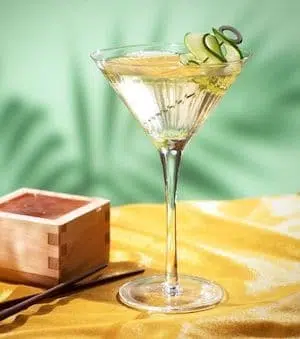
Are you in the mood for a Japanese twist? Then the Saketini is a perfect choice. It can be made with either Gin or Vodka and is mixed with traditional sake wine.
I prefer the Gin version to keep it more classic, but the decision is up to you.

Considerably far from being a Martini, but oh so delicious. The Espresso Martini is a mix of Vodka, coffee liqueur, and a fresh shot of espresso.
The shaken cocktail is served in a Martini glass and garnished with three coffee beans.
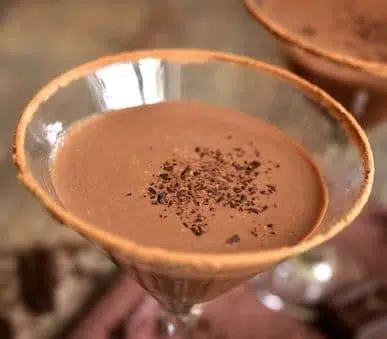
The Chocolate Martini is a sweet and chocolaty version of a Martini. A bit too sweet for my tastebuds but great if you're craving a sweet drink.
Vanilla flavored Vodka is mixed with chocolate liqueur and Irish cream to produce this creative twist on a Martini.
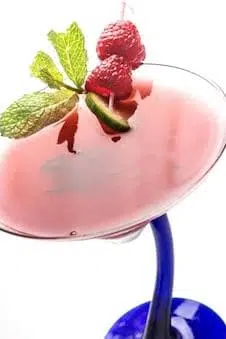
That is another sweet version of a Martini. The Raspberry Lemon Drop Martini is made with Citrus Vodka, lemon juice, syrup, Chambord, and fresh raspberries as a garnish. Sweet and tart but also far from being classic.
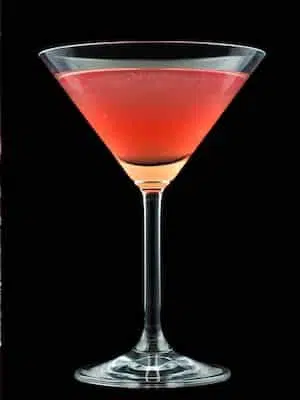
The French Martini is kind of a modern classic and was invented in the 1980s by Allan Katz. It's a very fruity twist that contains Vodka, Chambord, and pineapple juice.
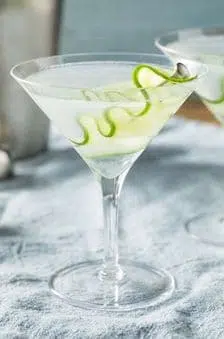
A more classic approach to a Martini, only using Gin and Vermouth but in different measurements. As the name suggests, the cocktail is garnished with cucumber.
If you're looking for a suitable Gin to make this drink, check out Hendricks Gin. It's cucumber-based and does work great in a Cucumber Martini.

Blood orange is a deliciously sweet, sour, and bitter citrus fruit and can be a fantastic ingredient for cocktails.
To create a Blood Orange Martini, you will need blood orange juice, Vodka, lime juice, Cointreau, and simple syrup. -Quite the list, considering a classic Martini only requires two. But the resulting cocktail tastes splendid.
Not like a classic Martini, but definitely a drink I keep going back to.
The Espresso Martini is currently the most popular coffee-based cocktail in the world. This blend of vodka, espresso, and coffee liqueur will definitely give you a boost when you're having a night out. The caffeine combined with alcohol will revive your energy levels.
Quick Facts Espresso Martini
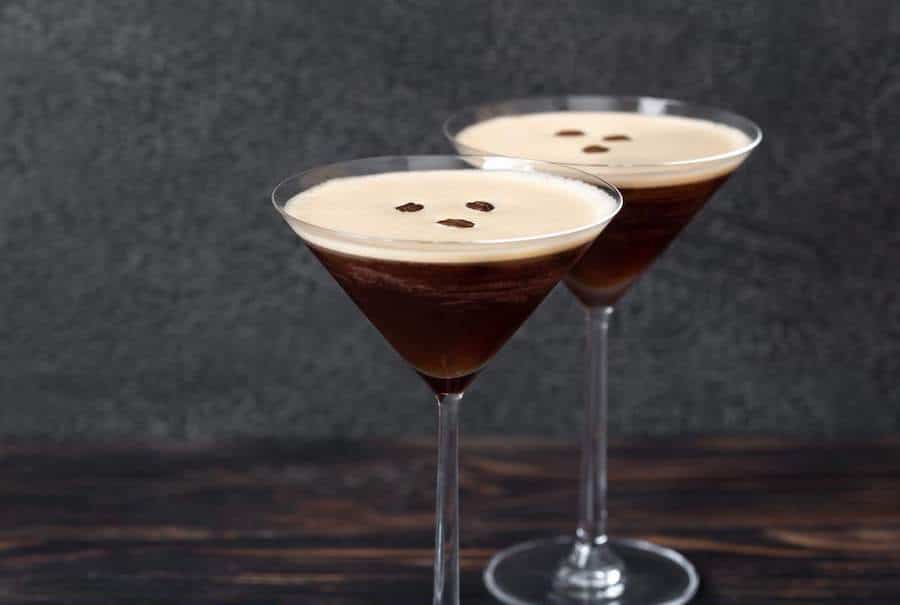
The beauty of the Espresso Martini is that it doesn't require many ingredients. It can take as little as a quality espresso, coffee liqueur, vodka, a little attention to detail, and a dash of simple syrup, if you like:
Kahlúa is the standard option for an Espresso Martini - if it's the best depends on personal taste, though. It is relatively sweet and might make additional sweeteners such as syrup redundant.
So, when using Kahlúa, the vodka cocktail is already nicely balanced without syrup, which makes the recipe even more straightforward. Plus, it's great value for money.
Yet, you absolutely can replace it with other coffee liqueur. You can use other renowned brands like (the less sweet) Tia Maria or any other favorite you might have. There are many possible substitutes for Kahlúa. All have different flavor profiles, and so will your Espresso Martini, depending on your choice.
One of our favorites for an extra potent Espresso Martini is Co'Ps espresso liqueur. It is comparably high in alcohol (30% ABV), and each shot contains the amount of caffeine of single shot espresso. - Which Kahlùa does not. In fact, the caffeine concentration is almost 20x less.
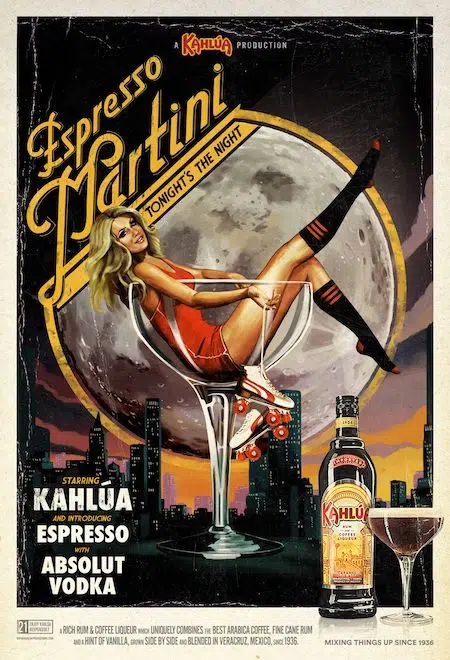
The original recipe of an Espresso Martini has only slightly more caffeine than a regular espresso. As mentioned, the caffeine content in Kahlúa is very, very low - negligible basically.
To get an idea, 100ml (a little less than 3.5oz) of espresso have 212mg of caffeine, and one of Kahlúa (1.5oz) only has 5mg. That's the same as 1.5oz Coca-Cola.
With a caffeine-heavy coffee liqueur like Co'Ps (1.5oz has 80mg of caffeine), it's a different story. The impact is immense, and you will also feel that. If the standard recipe already gets you going, a version with Co'Ps will totally wake you up.
A proper Espresso Martini will clock in around 16-20% ABV. Ultimately, it depends on the ratios you prefer, the coffee liqueur you choose, and whether you add simple syrup or you don't. Even the vodka brand can make a difference, as not all vodka has an alcohol content of 40%.
Our recipe has the mentioned ABV of 16%. If you omit the simple syrup, you get 18.5%, and with syrup but a higher ABV coffee liqueur (30% instead of 20% ABV), the overall alcohol content is at 18%. -All these numbers include the dilution caused by the melting ice during shaking.
The base, a high-quality shot of espresso, is non-negotiable. Brew it shortly before you plan to mix your drink and add it to your shaker while it's still warm - not hot, but properly warm. -The ice cubes in your shaker will cool it down quickly.
Coffee that cools down slowly turns bitter and unpleasant - and this taste would transfer into your cocktail. You certainly don't want that.
Also, since the Espresso Martini comes straight up, you best cool down your glass in the fridge or the freezer for 15 minutes before mixing. Alternatively, you can fill it with ice cubes while prepping your drink and remove them before you pour it.
The measurements of the recipe can widely differ. Kahlúa, for instance, suggests an equal-amounts approach for an Espresso Martini. This certainly works, yet, we lean more toward the official IBA recipe:
Apart from measurements, you can also experiment with the ingredients. As mentioned, you can try different coffee liqueurs and a variation without syrup. - And then you can substitute the vodka too:
One of the best Espresso Martinis I ever had was in one of my favorite bars in Prague, the Shrinks Office. The bartender asked if he could serve me something different from the classic Espresso Martini recipe - and what I got was outstanding.
He didn't give me the recipe but revealed he used Diplomatico Rum as the base spirit. For me, this is a game-changer. So, I highly recommend trying a rum-based Espresso Martini.
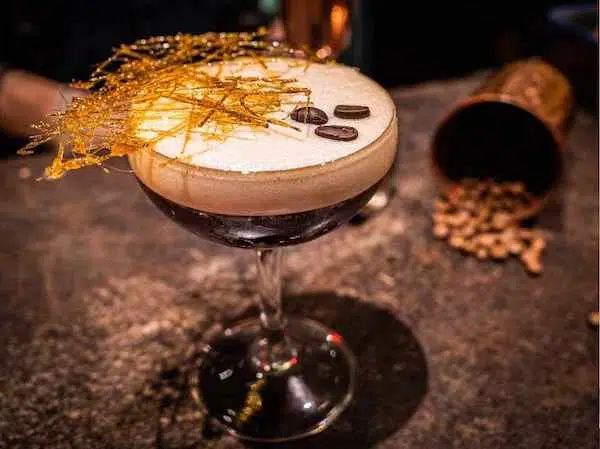
The Espresso Martini is iconic, and its inventor is one of the leading cocktail masters of England who also created the Bramble Cocktail: Dick Bradsell.
He first mixed the drink in 1983 when a model approached him, allegedly asking him for a cocktail to "wake me up, then fuck me up".
However, the original name was not as catchy as it is now. Bradsell sold his creation under the somewhat unimpressive name "Vodka Espresso". He changed it when he realized what a firestarter the drink was.
You are into Martini cocktails? Why not try one of these recipes:
Or another of the list of the most popular Martini riffs.
If you're drinking vodka occasionally, you may have heard people discussing the proof of vodka, the term "alcohol proof" or simply "proof." Alcohol proof is a unit to measure the amount of alcohol in a beverage. That applies not only to vodka but all alcoholic beverages.
Depending on the type of beverage, the proof can vary a lot. Lower-proof beverages like beer are as low as five proof, vodka proof is much higher. In the US, the standard proof of vodka is 80. However, the proofs vary within the vodka category.
This article will guide you through everything you need to know about vodka proof. Let's find out how strong this spirit is and how the proofs of different vodka brands compare.
Alcohol proof is one way to measure the alcohol content of liquids. The higher the proof, the higher the amount of alcohol. However, proof isn't the only way to measure the alcohol content of a spirit. The most-used measurement worldwide is ABV (Alcohol By Volume). This measurement indicates the amount of alcohol in a beverage through a percentage.
The proof measuring system is primarily used in the United States, where proof equals the double amount of a spirits ABV. For example, if vodka is 40 percent alcohol by volume, it's 80 proof vodka.
The amount of alcohol in vodka can be measured in proof or ABV, with the proof being ABV times two. But let me explain in more detail.
ABV means alcohol by volume and is the standard way of measuring the alcohol strength of drinks. It specifies how many ml of pure ethanol are in a 100ml solution. To further standardize those numbers, ABV gets measured at 68 °F or 20 °C. That is a global standard to measure alcohol content.
In the United States, there's also the term proof. The unit proof is also describing the alcohol content in a liquid. It's precisely two times the amount of ABV. So a vodka of 47% ABV is 94 proof. And now you may be wondering why it's called proof.
Back in the day, liquors were "proofed" to check the level of alcohol in them. That first occurred in England in the 1500s. Back then, liquors were taxed depending on the amount of alcohol. And naturally, as there's nothing as serious as taxes, that had to be "proofed" to get the correct taxation rate.
There were two different ways to "proof" alcohol amounts:
At first, a simple method called "burn or no burn" was used. For this, one tried to light the liquor itself to see if it burned. If the alcohol set fire, the liquid was considered "over proof". If it did not, it was considered "under proof."
However, this burn test was inaccurate as the flammability of alcohol highly depends on the temperature. That could lead to inconsistent results as it depended on the time and place the alcohol was tested. That's an issue that the gunpowder method fixed.
The gunpowder method is the first way to check alcohol content scientifically. This method involved a gun pellet soaked in the liquor. It got lit to find out how much alcohol was in the liquor.
If it burned, the spirit was considered "above proof." If it didn't, it was "under proof." And if it was "proof" and burned blue, it had just the right amount of alcohol. This sweet spot, by the way, is at 114 proof or 57.5% ABV.
Today we're past the gunpowder test and the old-school burn or no burn. By US law, alcohol proof equals twice the ABV percentage. That means to learn how proof is measured, we need to look at how ABV is determined.
One can measure Alcohol By Volume (ABV) with the help of the Gay-Lussac scale - a proof scale. French scientist Joseph-Louis Gay-Lussac invented this method in 1824 in France to detect the concentration of alcohol in a liquid, specifically in alcoholic beverages. It is based on the principle that pure alcohol has a specific volume at a certain temperature and pressure.
To determine the alcohol content using the Gay-Lussac scale, take a sample of the liquid, and measure its volume at a known temperature. Then, the volume of pure alcohol in the sample is calculated based on its density and the specific volume of pure alcohol at that temperature. This calculation gives the exact volume of pure alcohol in the sample as a percentage of the total volume of the liquid.
For example, a sample of an alcoholic drink has a volume of 100 milliliters and contains 40 milliliters of pure alcohol. Then, the alcohol content is 40% ABV (40 milliliters of alcohol out of 100 milliliters total).
Now that we've had a quick look at alcohol proof, I bet you're curious about the alcohol content in your beloved spirit, vodka, right?
There's a wide range of vodka proofs, but the standard proof of vodka in the US is 80 proof, translating to 40% ABV. The US legally requires that all vodka (and any other distilled spirit) is at least 80 proof. That means you won't get vodka with an amount of alcohol by volume below 40%. This legal requirement varies between countries and regions, though.
In the European Union, the minimum is slightly lower, at 37.5% ABV. Of course, the ABV of vodka can always be significantly higher. Vodka with proof of 100, 120, or even 160 is widely accessible.
In fact, the liquor with the highest level of alcohol sold in the US is vodka. It is Spirytus vodka from Poland and has a whopping proof of 192, meaning 96% ABV. There are even different ranges. You can find an overview of the range of proofs for vodka below.
Within the European Union, there's a vast selection of vodkas below 80 proof. Brands like Smirnoff, Absolut, Grey Goose, Ciroc, Skyy, and many more sell their products with 75 proof. The reason is that the legal requirements in the EU demand that vodka proof is at least 75 or 37.5% alcohol by volume.
Since lower alcohol content also means lower cost, these brands specifically produce vodkas that meet the minimum requirements. The products for the American market naturally contain 40% alcohol or 80 proof.
As mentioned above, this is the standard vodka proof in the U.S. and also internationally. Some brands produce exclusively at 80 proof to ensure the same taste experience everywhere in the world.
Several well-known vodka brands that offer the standard 80-proof version, also have stronger options of a 90-proof. So, if you're looking for a little more kick in your mixed drinks without sacrificing that delicate and pleasant flavor profile, a 90 proof vodka might be your perfect match.
Vodkas with 100 proofs or more are comparatively rare. In most cases, these products are used in cocktails. Be careful when drinking vodka of this proof range.
Some brands that produce such high-proof vodkas are Spirytus, Balkan 176, and Devil's Springs.

The proof of vodka brands and their products varies widely. You will find many brands offering vodkas at 80 proof (40% ABV), but there are plenty of highly alcoholic options available as well.
Here is a short overview of popular vodka brands and their alcohol content in Proof and ABV.
As listed in our overview above, Spirytus vodka is the highest-proof vodka at 192 proof, which equals 96% alcohol by volume. Only a few vodka brands produce such potent vodkas, but there are still a few.
Another one that surpasses the 100 proof mark is Devil's Springs vodka which is 160 proof, or 805 ABV. But remember, such strong vodkas aren't for the faint-hearted.
Vodka has been among the most popular types of spirits for decades. It's one of the spirits you should always have in stock at your home bar to make fancy cocktails.
The crystal clear liquor is made of water and ethanol and is known for its neutral flavor. It can contain additional ingredients that influence the flavor, like grains, grapes, fruits, roots, and even potatoes.
For this, the ingredients are fermented, distilled, and finally filtered. After the distillation process, the spirit is often above 90% ABV. After dilution with water, the final product is a high-proof spirit ranging between 40% and 50% ABV, or 80 and 100 proof.
And even if vodka is popular in the US, it is way more popular in Russia, Ukraine, Belarus, Finland, Iceland, and other European countries.
That does not come as a surprise, considering that vodka comes from Russia - or Poland, as research found. Also, the name vodka derives from the Russian word for water, "voda."
Learning about proof of vodka can help you become a better bartender, but also a more discerning vodka drinker. Understanding that proof does not equal quality is the first step. Purity, clearness, and a neutral taste are the primary elements of high-quality vodka.
However, if you need a kick in your vodka cocktails, choosing a higher-proof vodka can make a huge difference. If you plan to sip vodka neat, opt for a product that contains 75 or 80 proof. These ranges offer the best balance between taste and alcohol content.